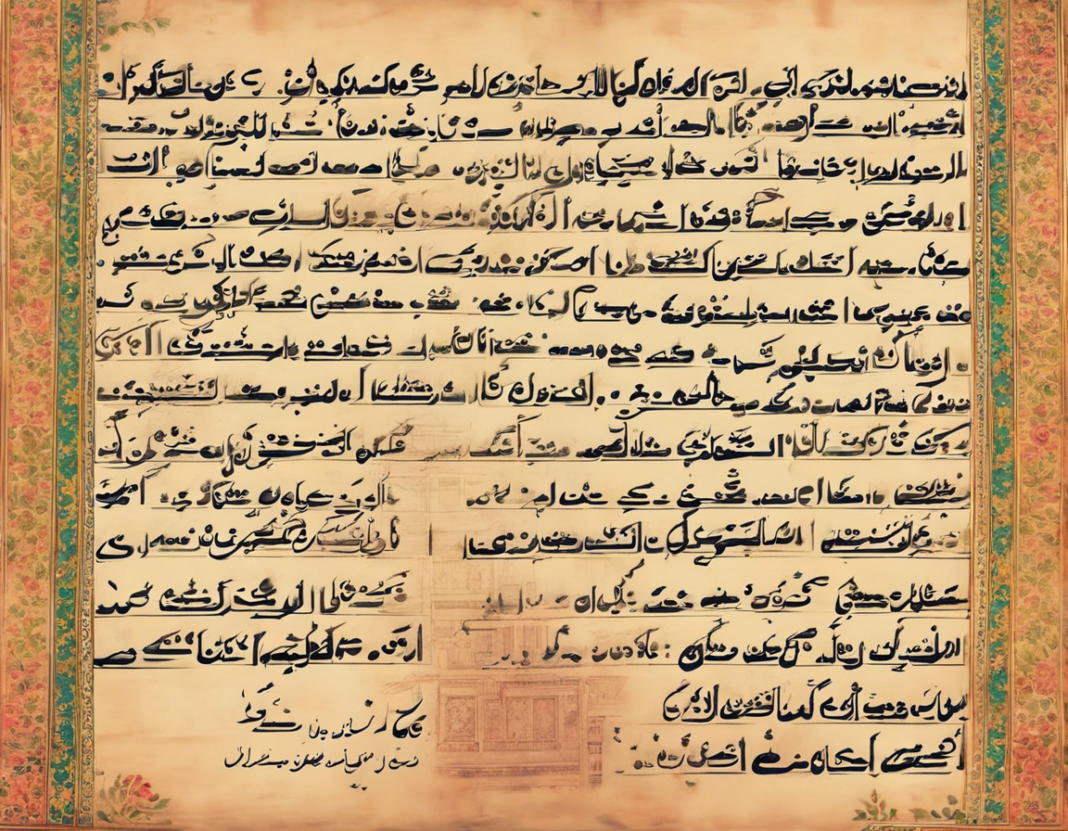Urdu poetry has a rich tradition that dates back centuries, with the Ghazal being one of its most celebrated forms. The term Ghazal originates from the Arabic word ‘Ghazaal’, which means the talk of gazelles. It is a poetic form consisting of rhyming couplets and a refrain, with each line sharing the same meter. The Ghazal is known for its intricate wordplay, deep emotions, and themes of love, longing, and spirituality.
Origins and Evolution of Ghazal
The Ghazal has its origins in Arabic poetry but reached its zenith in Persia before being adopted and adapted by Urdu poets. The 13th-century Persian poet Rumi is often credited with popularizing the form, which later inspired Urdu poets like Mirza Ghalib, Allama Iqbal, and Faiz Ahmed Faiz. Each poet brought their unique style and interpretation to the Ghazal, resulting in a diverse range of themes and expressions within the form.
Structure of a Ghazal
A traditional Ghazal typically consists of five to fifteen couplets, or sher, that are thematically linked and share a common meter and rhyme scheme. The first couplet sets the tone for the entire poem and often includes the poet’s pen name, or takhallus. The second line of each couplet ends with a refrain, or radif, which is repeated throughout the poem. The final couplet, or maqta, contains the poet’s signature, often in the form of their takhallus.
Themes and Motifs in Ghazal
One of the defining features of the Ghazal is its exploration of themes such as love, desire, separation, and mysticism. Poets use complex metaphors, symbols, and imagery to evoke intense emotions and convey profound philosophical ideas. The Ghazal is also a vehicle for social and political commentary, with poets often using it to critique societal norms and injustices.
Notable Ghazal Poets
Several poets have made significant contributions to the Ghazal tradition, leaving behind a legacy of timeless verses that continue to resonate with readers today. Mirza Ghalib, known for his mastery of language and deep introspection, is considered one of the greatest Urdu poets of all time. Allama Iqbal, on the other hand, infused his Ghazal with themes of nationalism, spirituality, and self-discovery. Faiz Ahmed Faiz, a revolutionary poet, used the Ghazal to express his concerns about society and politics.
Ghazal in Popular Culture
The Ghazal has not only endured as a revered literary form but has also found its way into popular culture through music, film, and television. Renowned singers like Jagjit Singh, Ghulam Ali, and Abida Parveen have popularized Ghazals with their soulful renditions, bringing the poetry to a wider audience. Bollywood films often feature Ghazals in their soundtracks, further cementing its place in mainstream entertainment.
The Beauty of Language in Ghazal
One of the most enchanting aspects of the Ghazal is its use of language to evoke sensory experiences and deep emotions. Poets employ intricate wordplay, rich metaphors, and poetic devices like takhmeen (allusion) and tarheeb (suggestion) to create layers of meaning within a few lines. The fluidity of Urdu allows for a musicality in the verse, enhancing the beauty of the Ghazal when recited or sung.
Ghazal: A Universal Expression of Emotions
While rooted in Persian and Urdu literary traditions, the Ghazal transcends cultural and linguistic barriers to resonate with audiences around the world. Its themes of love, loss, longing, and spirituality are universal, touching the hearts and minds of readers regardless of their background. The timeless elegance and emotional depth of the Ghazal ensure its enduring appeal across generations.
Frequently Asked Questions (FAQs) about Urdu Ghazal:
- What is the difference between a Ghazal and a Nazm?
-
A Ghazal is a form of poetry consisting of rhyming couplets and a refrain, while a Nazm is a traditional poem with a free rhyme scheme and no specific structure. Ghazals often focus on themes of love and longing, while Nazms explore a wide range of topics.
-
Who are some contemporary Ghazal poets to explore?
-
Contemporary poets like Javed Akhtar, Pankaj Udhas, and Gulzar continue to write and perform Ghazals that reflect modern sensibilities while staying true to the traditional form.
-
Can non-Urdu speakers appreciate the beauty of Urdu Ghazal?
-
Absolutely! Many translations and interpretations of Ghazals are available in English and other languages, allowing a wider audience to experience and enjoy the beauty of Urdu poetry.
-
What are some common themes in Urdu Ghazal?
-
Some common themes in Urdu Ghazal include love, yearning, separation, nature, spirituality, and societal commentary. Poets use these themes to convey complex emotions and ideas in a concise and evocative manner.
-
Are there any gender biases in the portrayal of emotions in Urdu Ghazal?
- While traditional Ghazals often reflect male perspectives on love and longing, contemporary poets have challenged gender norms and introduced diverse voices and narratives in their poetry.
In conclusion, the Urdu Ghazal stands as a testament to the power of language and emotion, weaving together words and sentiments in a tapestry of beauty and meaning. Through its timeless verses and universal themes, the Ghazal continues to captivate and inspire audiences, inviting them on a poetic journey of love, longing, and self-discovery.






